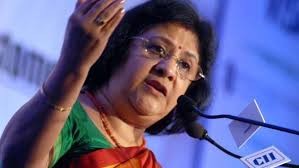In mid-September, President Droupadi Murmu pushed for increased representation of women in the Gujarat Assembly. She also called for more representation of women in politics in general.
That’s about women in politics. A July article in The New Yorker by Louisa Thomas talks about the state of women’s soccer. “Spain qualified for the Women’s World Cup for the first time in 2015. That was also the year that the Barcelona Femení, the women’s side of the legendary FC Barcelona, became a professional team,” Thomas wrote.
The women’s team had been around since 1970, when a group of female supporters of the men’s club donned white shirts, blue shorts and Barça socks, and played a match at Barcelona’s stadium, Camp Nou, to raise money for children’s hospitals. For decades, they held training sessions in the evening, because the team’s players were also students or had daytime paying jobs. The club recognised the women’s team officially in 2002, and in 2011, the Femení managed to win La Liga, their first official title.
When FC Barcelona finally decided to invest in the women’s side, it had two options: Buy a championship team or build one. It opted for the second – focusing primarily on player development by hiring nutritionists, psychologists, fitness coaches, medical staff, a kit manager and technical staff.
That’s the way to strengthen women’s representation in every field, including banking and finance – by creating the right ecosystem.
Let’s look at a few relevant figures first.
# India ranked 127 in gender parity out of 146 countries, according to the World Economic Forum’s (WEF) 2023 Global Gender Gap report.
# 82 per cent of women’s employment in India is concentrated in the informal economy, says a 2021 International Labour Organisation (ILO) report.
# ILO also says the gender pay gap in India stands at 27 per cent as of 2023.
# The Reserve Bank of India (RBI) has found that overall, there is 24 per cent representation of women in all scheduled commercial banks.
# Finally, according to global accounting network MGI Worldwide, India could add up to $770 billion to its GDP by 2025 by giving equal opportunities to women.
The gender gap is not a typical India story. The WEF report says globally, it will take 132 years to address it! The latest Grant Thornton study on Women in Business says that on a global level, women now hold 32.4 per cent of senior management positions in mid-market businesses – a rise of just 1 percentage point in the past one year. It was around 19.4 per cent in 2004, when Grant Thornton initiated this study.
Software is one segment where women have been forging ahead in India. The overall women headcount at five large software companies has jumped 77 per cent, compared with a 62 per cent rise in male employees, according to data compiled by specialist staffing firm Xpheno. The share of women employees across these five companies stood at 34.1 per cent in the first quarter of FY2024, up from 31.7 per cent five years ago.
Unfortunately, that’s not the case with the banking sector.
Tarjani Vakil was the first woman to reach the top at Export-Import Bank of India in 1996. Ranjana Kumar became the chairperson and managing director (CMD) of Indian Bank four years later. She also headed the National Bank for Agriculture and Rural Development. The second woman boss in a commercial bank is HA Daurwalla of the Central Bank of India (2005). It took a little over three decades after nationalisation for a woman to become a bank’s CEO. There is also Naina Lal Kidwai, who became the CEO of HSBC India in 2006.
At the RBI, it was 68 years before a woman reached the deputy governor’s post (Kishori J Udeshi, who took over in June 2003). The Securities and Exchange Board of India, or Sebi, got its first woman boss in 2022. For the State Bank of India, the nation’s largest lender, the wait was 206 long years until Arundhati Bhattacharya took the corner office in October 2013.
The 2010 Anil Khandelwal report on HR in banking had found that at that time, women accounted for 17 per cent of employees in public sector banks (PSBs), and only 2.7 per cent of them were in executive positions. The ratio has improved since, but not significantly. Between FY07 and FY21, the proportion of women employees in PSBs rose by 12.7 percentage points — from 14.3 per cent to 27 per cent. In all scheduled commercial banks, the proportion of women employees during this period rose by 9.1 percentage points, from 14.8 per cent to 23.9 per cent, a January BusinessLine report says. In private and foreign banks, the participation of women in the workforce has shown miniscule growth.
Even the RBI suffers from this ailment. The Gender Balance Index 2023 of the Official Monetary and Financial Institutions Forum, an independent think tank concerned with central banking, economic policy and public investment, says the Asia-Pacific region scores poorly across financial institutions. Its regional score is 20 or below for central banks, pension funds and sovereign funds, and that for commercial banks has dropped to 29 from 30 in 2022.
The Asia-Pacific is the second worst performing region, and the score dropped due to lower women representation at the People’s Bank of China and the RBI, “which were already poor performers”. The RBI’s annual report carries the number of total staff, but does not specify the gender variation. Going by the Businessline report, as on January 1, 2023, of the 13,000-plus RBI employees, 23 per cent were women.
Incidentally, in June 2022, RBI Deputy Governor Michael Debabrata Patra had said India’s women workforce participation is among the lowest in the world – worse than even Pakistan – and it is going down. “It is because we are not creating a friendly place at work for our women.”
A March 2023 report (Mind the Gender Gap) by the CFA Institute pointed out that in India and elsewhere, a majority of women face sexual harassment in the workplace, but they don’t report it. It also found that there were no gender differences in skills training by companies, and highlighted implicit biases that influence reviews for women and, in turn, their career progression.
The most significant boost to achieving gender parity could come from a commitment from companies to provide flexible working. Policies such as six months of maternity leave and two-year childcare are progressive steps, but these are not enough to encourage women. The Grant Thornton report says businesses that offer hybrid, flexible or home working, outperform when it comes to women in senior management.
Also, the much talked about environmental, social and governance (ESG) norms can change the scene since companies are looking to create diverse leadership teams. Without diversity, they may find it difficult to raise capital.
This column first appeared in Business Standard.
The writer, a Senior Adviser to Jana Small Finance Bank, writes Banker’s Trust every Monday in Business Standard.
Latest book Roller Coaster: An Affair with Banking
Twitter: TamalBandyo
Website: https://bankerstrust.in



